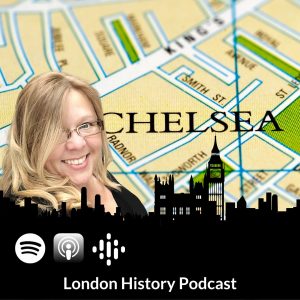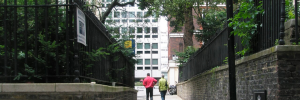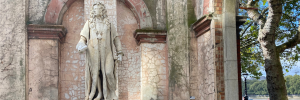In the verdant and affluent district of Chelsea, there whispers a tale of a man whose legacy is etched not just into the annals of British history but also into the very streets and squares of London. Sir Hans Sloane, a name that resonates through the corridors of time, was a man of science, a passionate collector, and is often cited in the annals of culinary history as the inventor of hot chocolate, although this claim is as much a mixture of myth and fact as the concoction itself.
A Stroll Through Chelsea’s History
To understand Sloane’s impact, one must first step back into the history of Chelsea. From its rural beginnings, Chelsea burgeoned into a fashionable district for the aristocracy in the early 16th century, partly due to Henry VIII’s establishment of a manor house there. By the time Sloane arrived in the late 17th century, Chelsea was a thriving hub of intellectual and horticultural activity, providing fertile ground for Sloane’s extensive botanical studies.
Sloane’s Life and Collections
Born in 1660 in Killyleagh, Ireland, Sloane was a physician by training and an avid collector by vocation. His passion for natural history and ethnography drove him to amass one of the most significant collections of the era. After a formative journey to Jamaica, he returned to England with over 800 species of plants and a plethora of curiosities that would become the bedrock of his collection.
Throughout his life, Sloane acquired a staggering array of objects — from coins and manuscripts to natural specimens and antiquities. His collection was a reflection of the Enlightenment’s hunger for knowledge and the era’s fascination with the natural world and the artefacts of ancient civilisations.
Sloane’s trove was so vast and varied that it laid the foundations for the British Museum, the British Library, and the Natural History Museum in London. His bequest was not just a donation; it was the inception of public access to the world’s knowledge and curiosities, making him a cornerstone in the establishment of public museums.
The Chocolate Controversy
Now, the sweet and warming narrative that ties Sloane to the invention of hot chocolate is as tempting as the drink itself. While Sloane did not invent chocolate, which had been consumed by indigenous peoples in the Americas long before Europeans arrived, he is often credited with popularising the hot chocolate drink in England.
The story goes that during his time in Jamaica, Sloane was offered cocoa by the locals, which he found nauseating due to its bitterness. To make it palatable, he purportedly mixed the cocoa with milk, and thus the English version of hot chocolate was born. Upon returning to England, Sloane brought the recipe back, and it was eventually commercialised by apothecaries as a medicinal drink.
Yet, this tale is not without its critics. Some historical accounts suggest that milk was already being added to chocolate in Europe prior to Sloane’s concoction, casting doubt on his role in the drink’s evolution. Nevertheless, his name became associated with chocolate, and whether he was the innovator or simply an influential figure in its history remains a point of delicious debate.
Legacy in Chelsea and Beyond
Sir Hans Sloane’s impact on Chelsea is indelible. His name graces the affluent Sloane Square, and the nearby streets whisper his legacy. He also had a considerable effect on the Chelsea Physic Garden, enriching its collection and ensuring its survival through his patronage.
Sloane’s true genius lay in his vision for the accessibility of knowledge. By bequeathing his collection to the nation, he democratised access to information and cultural heritage. While the hot chocolate story remains murky, the clarity of his impact on the fields of collection and curation is undeniable.
In Chelsea and beyond, Sir Hans Sloane remains a symbol of curiosity, enlightenment, and the enduring human desire to preserve and share knowledge. His life and work remain a testament to the idea that our collective history is the richest treasure we hold — a treasure that is to be shared with all, just like a warming cup of cocoa, irrespective of who added the milk.
 Listen to episode 124. The History of Tite Street, Chelsea
Listen to episode 124. The History of Tite Street, Chelsea



